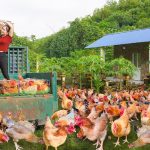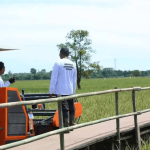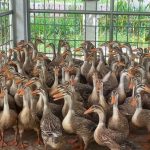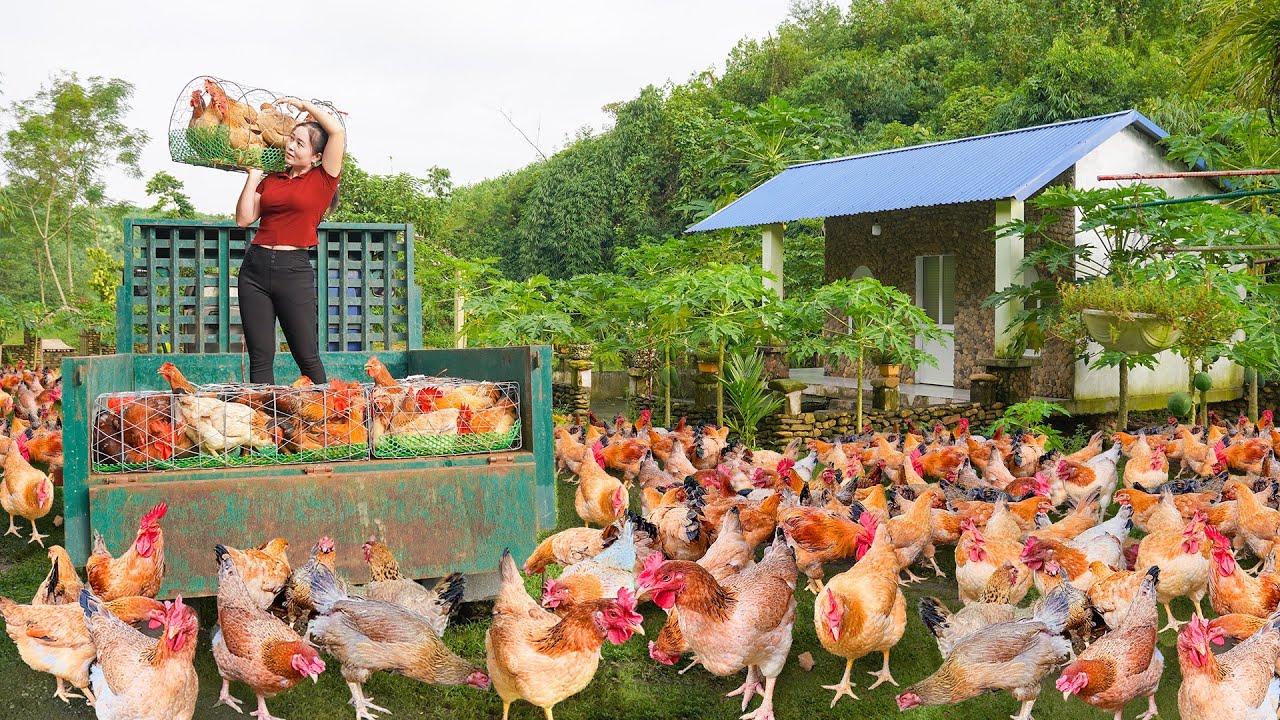Urban Beekeeping for Honey Production in Small Spaces Without Expensive Equipment
Urban beekeeping has emerged as a captivating pursuit for city dwellers seeking to reconnect with nature while producing liquid gold from their own backyard or rooftop. This innovative practice merges traditional apiculture with modern, space-conscious living and offers a sustainable, enriching hobby that nourishes the environment and the urban palate.
Understanding Urban Apiculture
Urban beekeeping in metropolises may seem anachronistic at first glance, but it is an ancient craft that has been reborn in a contemporary setting. Cultivating hives in confined spaces requires ingenuity and a commitment to environmentally friendly practices. Embracing the challenge of limited space inspires enthusiasts to deploy creative methods and repurpose otherwise overlooked urban niches.
The Ecological and Societal Benefits
City beekeeping yields an array of ecological boons. Urban pollinators often thrive amid the diversity of ornamental gardens and community green spaces, enhancing local biodiversity and supporting flora that might otherwise struggle in a concrete jungle. Furthermore, urban honey is typically imbued with distinct flavor profiles owing to the varied pollen sources available in an urban mosaic. Such honey often boasts various aromas and subtle nuances that set it apart from its rural counterparts.
In addition to environmental advantages, the practice fosters a renewed sense of community. Enthusiasts share experiences, exchange innovative tips, and even collaborate on local projects that advocate for green initiatives. The collective effort to preserve and nurture pollinators in an urban setting transforms isolated hobbyists into a cohesive network of eco-conscious citizens.
Dispelling Common Misconceptions
There exists a myth that urban environments are inherently hostile to bees. In reality, cityscapes may offer ample foraging opportunities provided that native and flowering plants are accessible. The careful management of hives ensures that bees are not overburdened by pollutants or stressors that sometimes accompany densely populated areas. With proper research and thoughtful planning, urban apiculture can flourish amid bustling streets and towering edifices.
Maximizing Small Spaces for Apiaries
The constraints of urban living require a shift in perspective regarding space utilization. Creativity and strategic planning are paramount when establishing a hive in a limited area. City rooftops, balconies, and even unused courtyards can be transformed into thriving sanctuaries for bee colonies.
Selecting an Optimal Location
Before installing any hive, it is crucial to analyze the site for adequate sunlight, protection from strong winds, and proximity to abundant nectar sources. Rooftops offer a serene environment away from the disturbances of street traffic, while balconies provide an intimate connection with nature. A well-chosen location is instrumental in ensuring that bees can navigate safely to nearby flowering plants and that the urban beekeeper can easily monitor the hive.
Ingenious Solutions to Overcome Spatial Constraints
Urban apiarists have devised several ingenious techniques to overcome spatial limitations. Vertical gardening, for instance, can complement beekeeping by providing additional forage options like climbing plants and trellised flowers. Furthermore, modular hive designs and stackable equipment reduce the overall footprint while offering sufficient space for a thriving colony. By adapting to the available space, hobbyists can maintain the delicate balance between human habitation and the needs of their buzzing companions.
Equipment Essentials on a Budget
One of the primary concerns for urban beekeepers is the cost of maintaining a productive apiary. Fortunately, modern approaches to urban apiculture emphasize frugality and resourcefulness. The philosophy of using minimalistic equipment does not compromise the health or efficiency of the hive.
Minimalist Tools for Urban Apiaries
A fundamental beekeeping toolkit comprises a protective suit, a smoker, a hive tool, and the hive itself. For urban enthusiasts, there is little need to invest in extravagant apparatus. Instead, one can opt for robust, locally sourced materials adapted to smaller environments. Investing in essential equipment that is both durable and versatile helps mitigate costs while still ensuring that the bees receive the care they require.
Creative DIY Approaches for Cost Efficiency
Resourceful urban beekeepers often embrace do-it-yourself techniques to build custom hives and accessories. Repurposing discarded wood and other salvageable materials to construct hive boxes reduces expenses and promotes sustainability. DIY projects encourage experimentation and customization, allowing hobbyists to fine-tune their apiary to the specific demands of their urban locale. Online communities and local workshops often serve as invaluable resources for innovative, cost-effective ideas.
Techniques for Successful Honey Production
Producing high-quality honey in an urban setting necessitates diligent hive management, periodic monitoring, and understanding seasonal variations. Urban beekeeping is both an art and a science, requiring a balanced approach that honors the natural rhythms of the bee colony.
Diligent Maintenance and Monitoring
Regular inspections are essential to ensure the colony’s well-being. Urban beekeepers are encouraged to conduct routine assessments to monitor the queen’s health, the adequacy of the brood, and the hive’s overall productivity. Hobbyists can pinpoint potential issues early by maintaining a detailed log of hive activity and environmental conditions. A proactive approach to maintenance fosters resilience within the colony and contributes to the steady production of honey.
Adapting to Seasonal Variations
Urban environments experience distinct seasonal patterns that directly impact the availability of nectar and pollen. During warmer months, urban flowers burst into bloom, providing abundant resources for bees. Conversely, colder periods necessitate a shift in strategy as the bees enter a state of reduced activity. Understanding these natural cycles enables urban apiarists to time their interventions appropriately. For example, supplemental feeding or the strategic relocation of hives may be warranted to ensure the colony remains vigorous throughout the year.
Tips and Tricks for the Aspiring Urban Apiarist
As with any specialized pursuit, seasoned urban beekeepers have accumulated a wealth of practical tips and clever techniques. These insights often result from years of experimentation and a deep-seated passion for the craft.
Embracing Natural Practices and Organic Care
One of the cornerstones of successful urban beekeeping is the adoption of natural practices. Avoiding chemical treatments and relying instead on organic methods helps maintain the intrinsic purity of the honey. Encouraging the growth of indigenous, pesticide-free plants around the hive creates a harmonious ecosystem that supports bees and the local flora. Such practices contribute to the production of honey that is as pure as it is flavorful.
Prioritizing Safety and Community Engagement
Safety remains a paramount concern in urban beekeeping. Protective clothing and cautious handling of the hive ensure that interactions with the bees remain non-disruptive. Urban apiarists are advised to familiarize themselves with local regulations and community standards, mitigating potential conflicts with neighbors. Engaging with community groups and regional environmental organizations fosters a supportive network that can advocate for the importance of urban beekeeping. Such networks also provide a platform for sharing advice, troubleshooting challenges, and celebrating successes.
Overcoming Challenges and Mitigating Risks
No endeavor is without its obstacles, and urban beekeeping is no exception. The unique challenges presented by city life require thoughtful strategies and adaptive solutions.
Addressing Urban Pollutants and Environmental Stressors
One significant concern in urban settings is the presence of pollutants that may compromise the health of a bee colony. Urban apiarists are encouraged to select locations that offer some isolation from heavy traffic and industrial areas. Moreover, establishing hives near community gardens or green rooftops can provide a natural buffer against harmful emissions. Regular monitoring of hive health and using organic, non-invasive treatments can help counteract the adverse effects of urban pollutants.
Navigating Local Regulations and Community Relations
Urban beekeepers must often contend with regulatory frameworks and community perceptions. Building strong relationships with neighbors and local authorities is essential for the long-term success of any urban apiary. Transparent communication regarding the safety measures in place and the environmental benefits of beekeeping can alleviate concerns. Urban apiarists may also consider hosting educational workshops or hive tours, which serve as opportunities to demystify the practice and highlight its positive contributions to urban ecology.
Concluding Reflections
Urban beekeeping for honey production in small spaces represents an elegant synthesis of tradition and innovation. Cultivating thriving bee colonies without resorting to expensive equipment underscores the resilience and adaptability of both bees and humans. In the city’s heart, where concrete often dominates the landscape, urban apiarists forge pockets of nature that are teeming with life and promise.
This transformative hobby yields high-quality honey with complex flavor profiles and reaffirms the importance of biodiversity in urban ecosystems. By harnessing resourcefulness and a spirit of ingenuity, urban beekeepers can create sustainable sanctuaries that benefit the environment and foster community engagement. Whether you are a seasoned apiarist or a curious beginner, the journey into urban beekeeping offers a rewarding exploration of nature in one of its most unexpected habitats.
Through meticulous planning, adaptive techniques, and an unwavering commitment to organic practices, the urban beekeeper can ensure that every drop of honey produced reflects a harmonious blend of tradition and modern innovation. Embrace the challenge of limited space and allow the buzzing of industrious bees to remind you that even in the most compact urban settings, nature can flourish and inspire.










